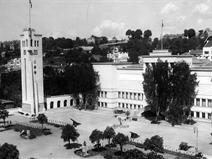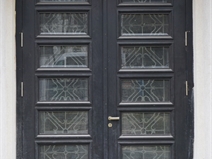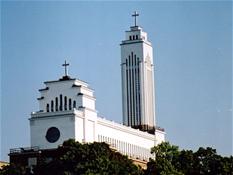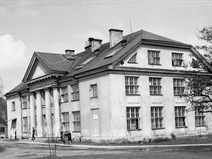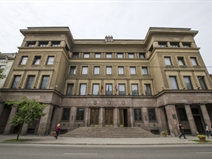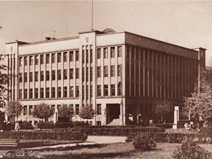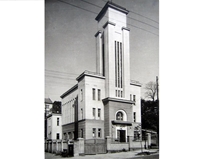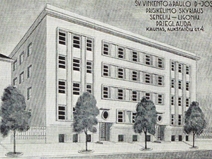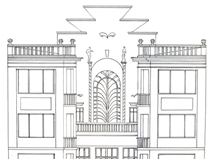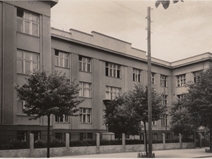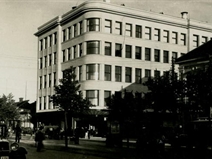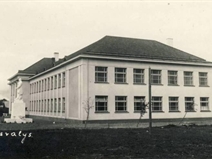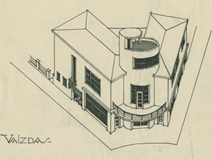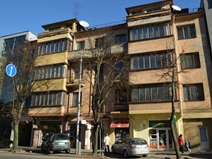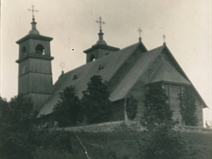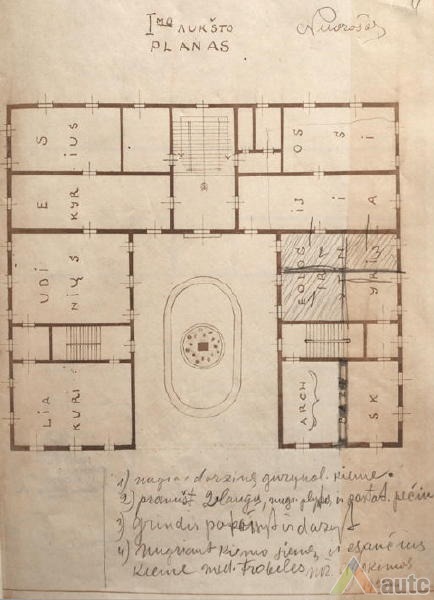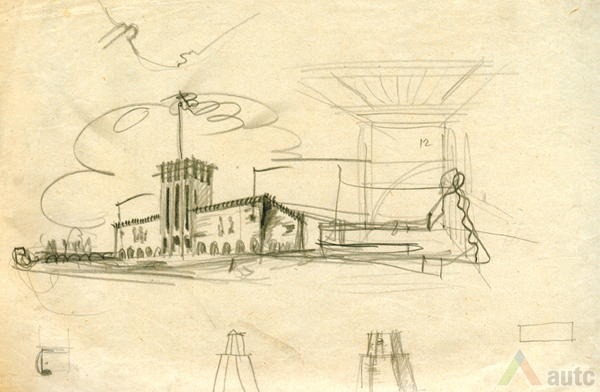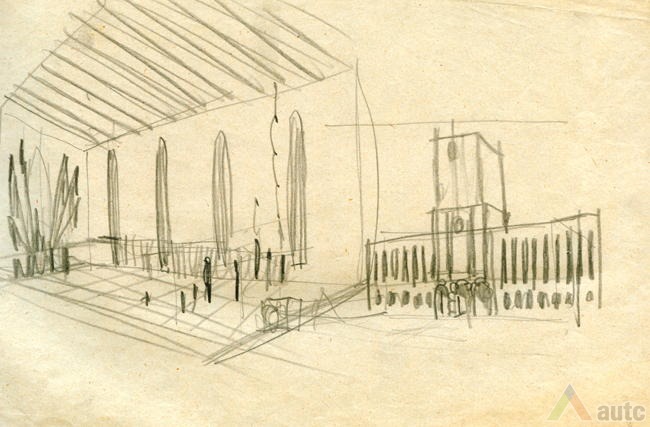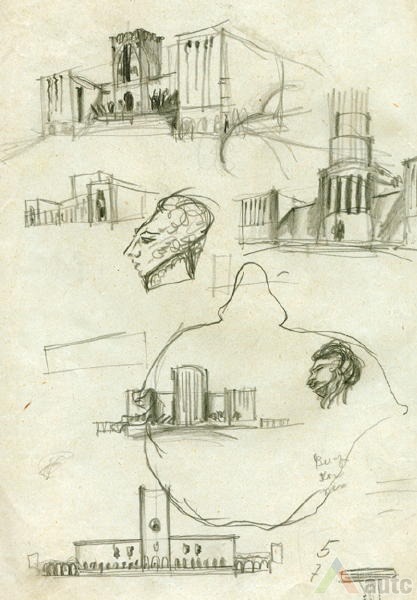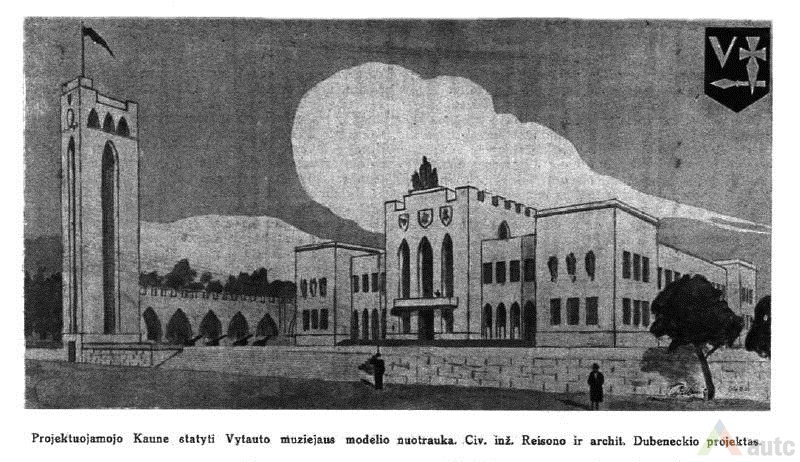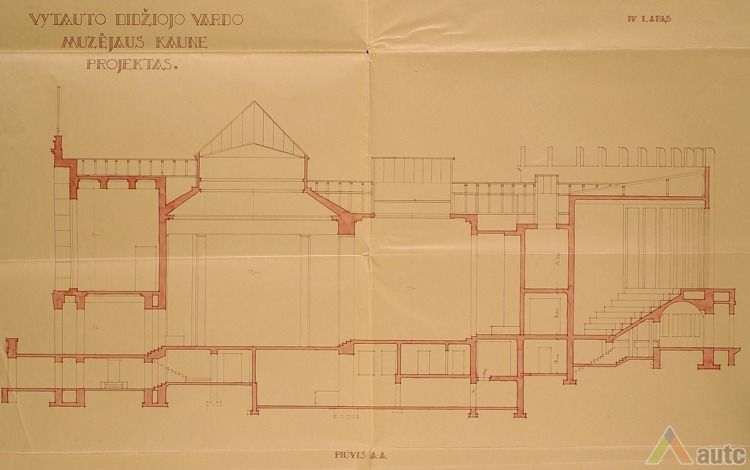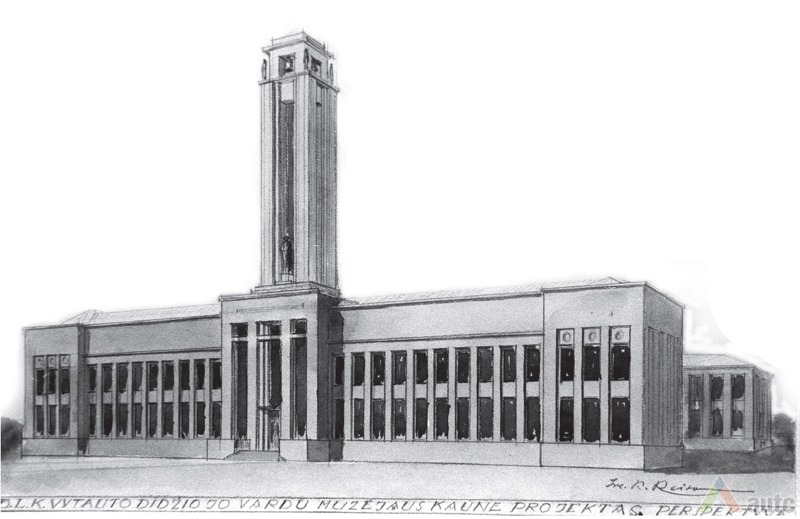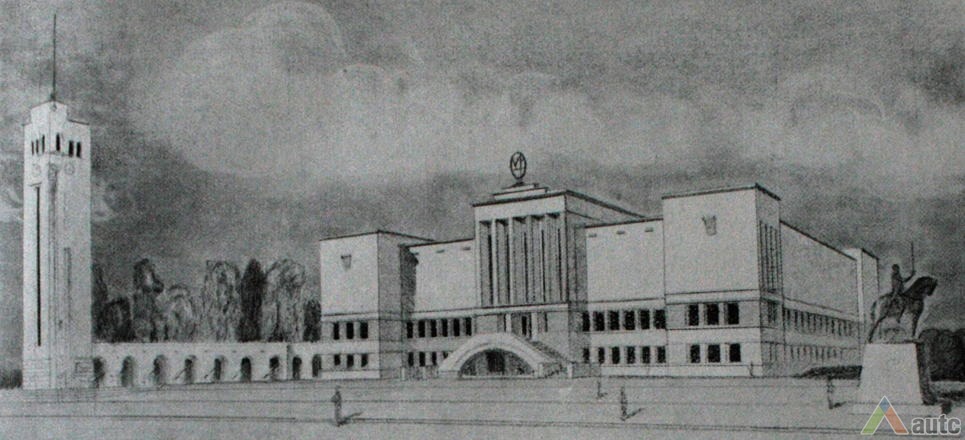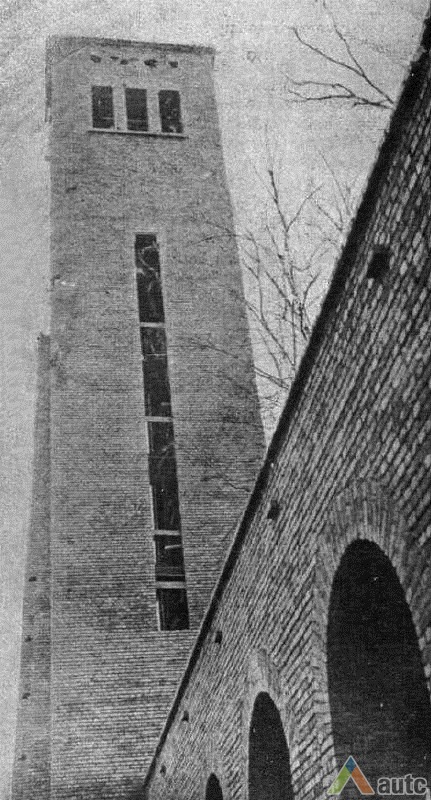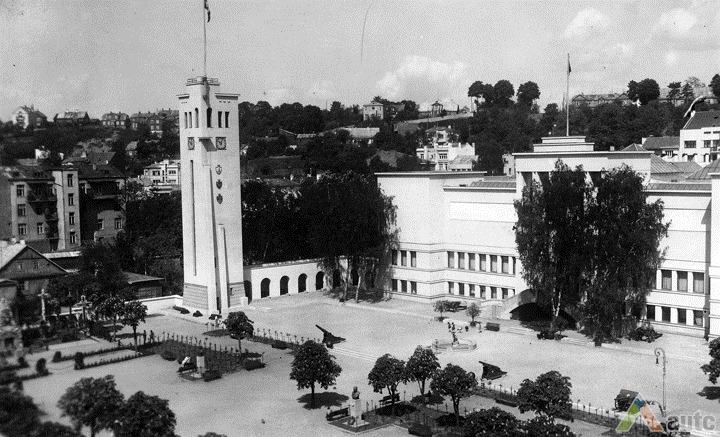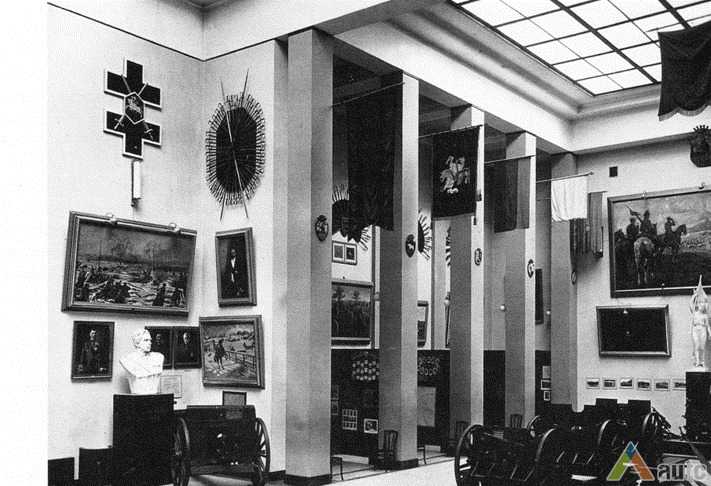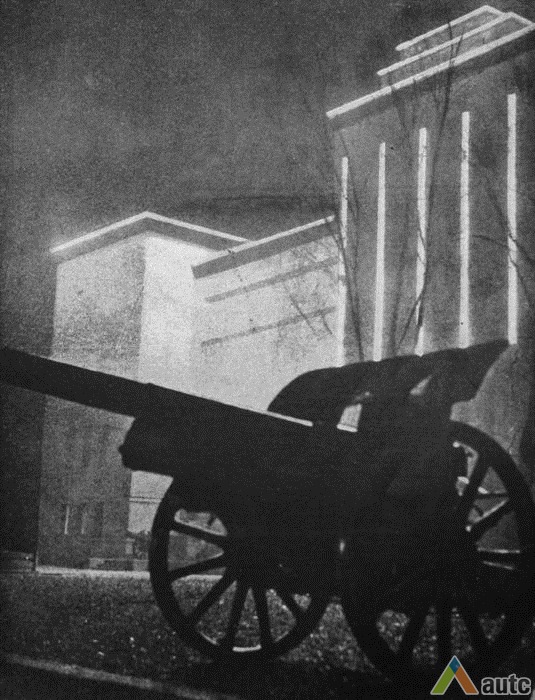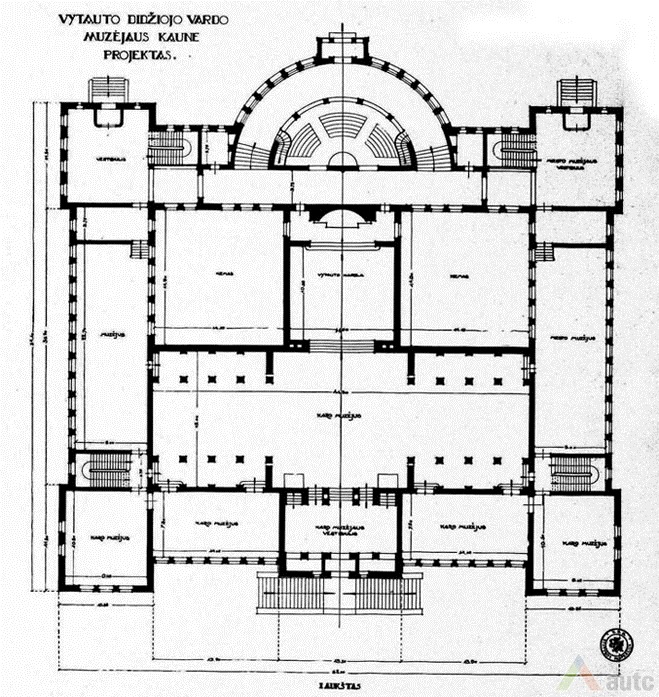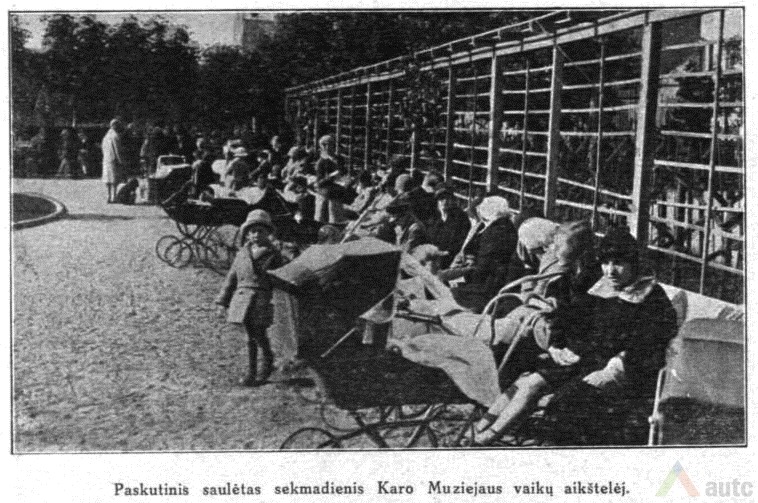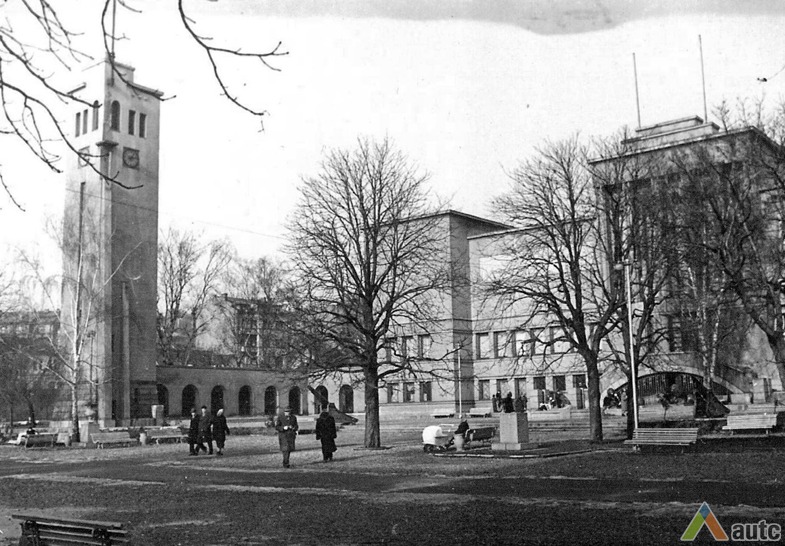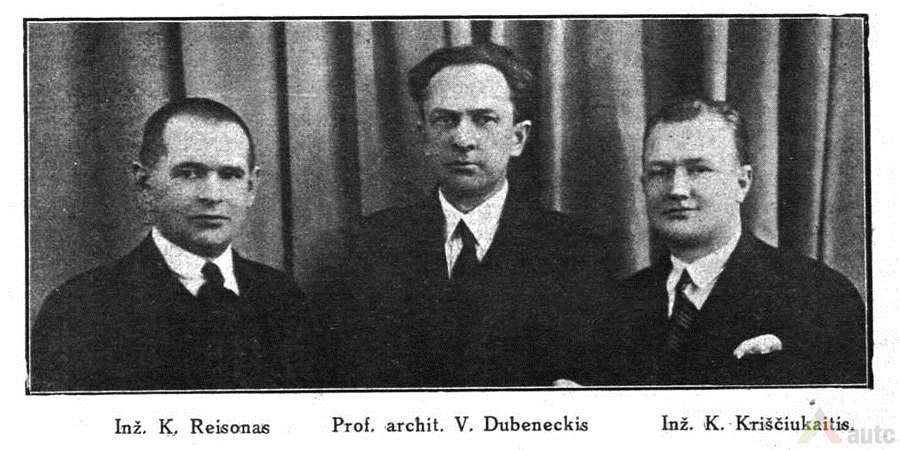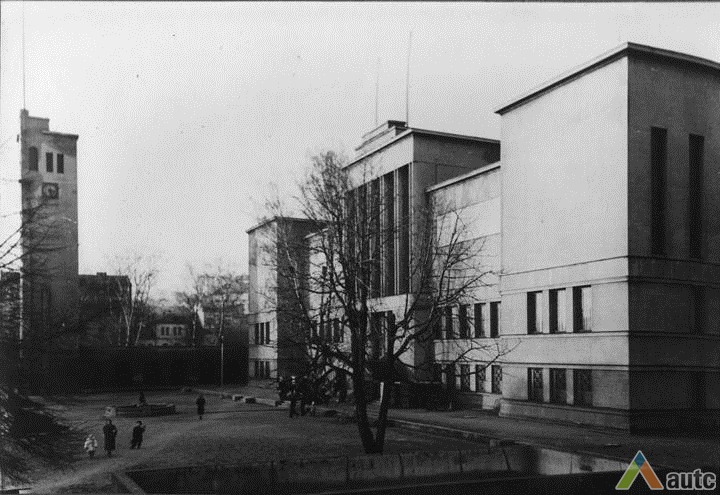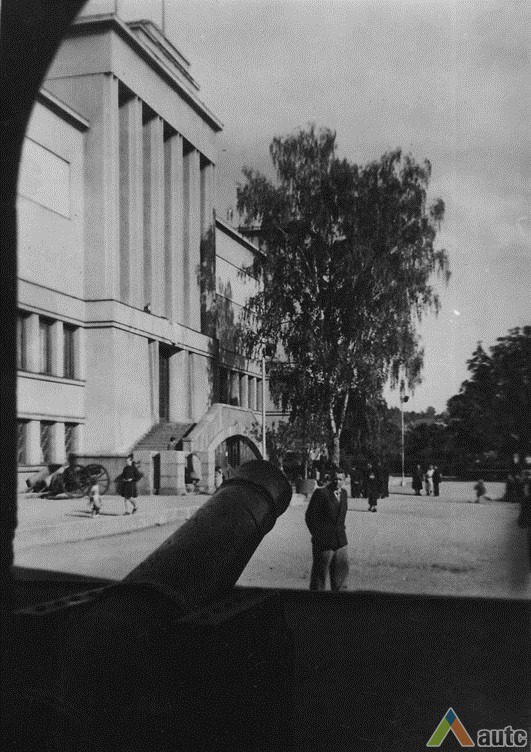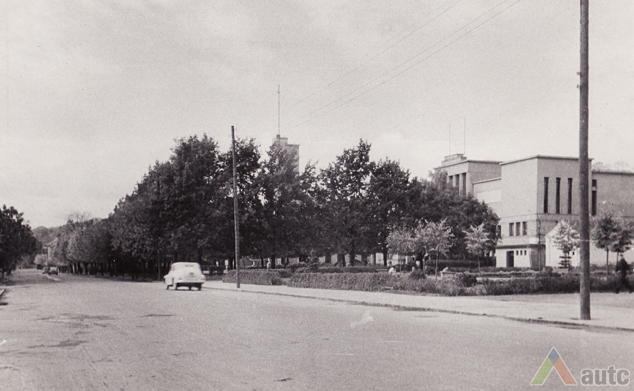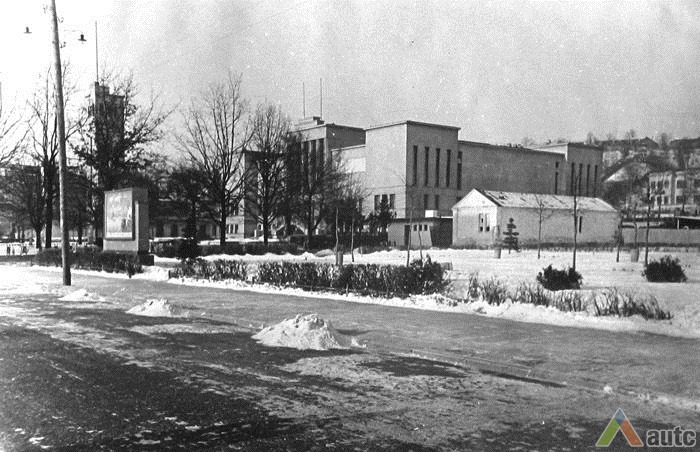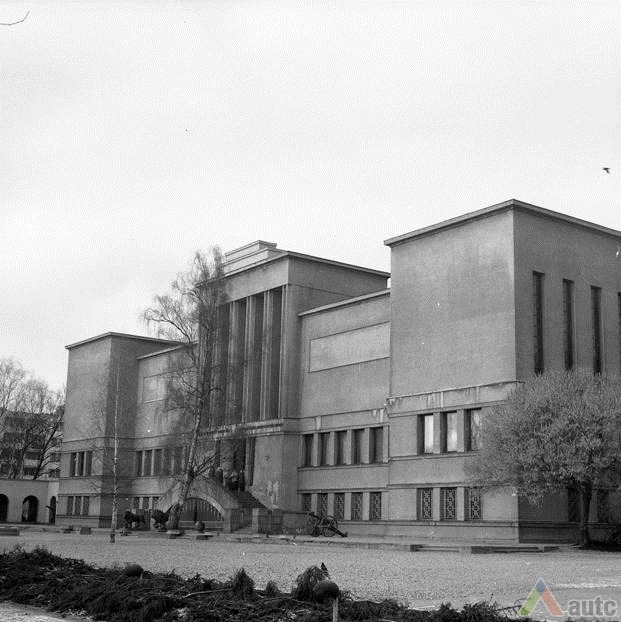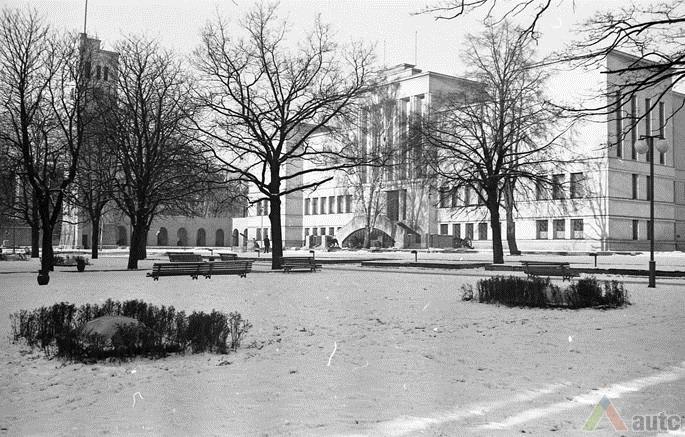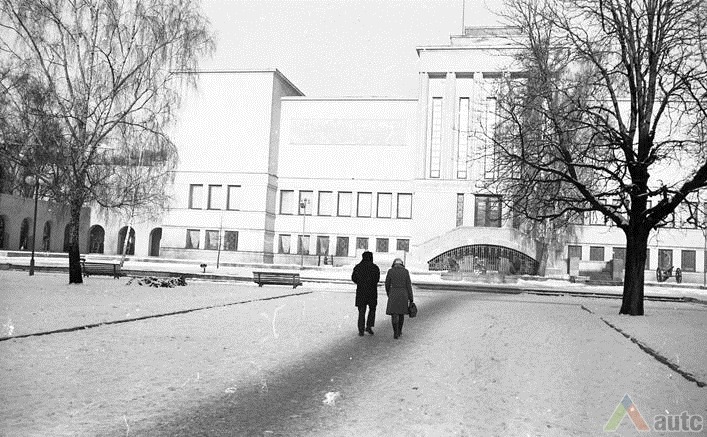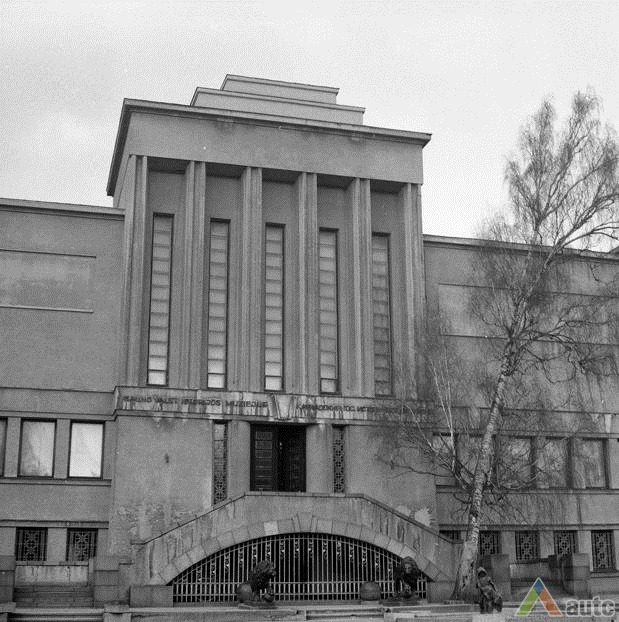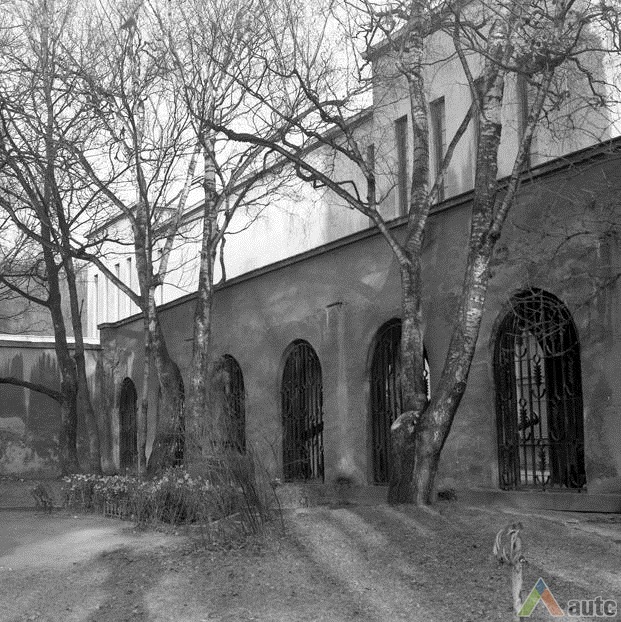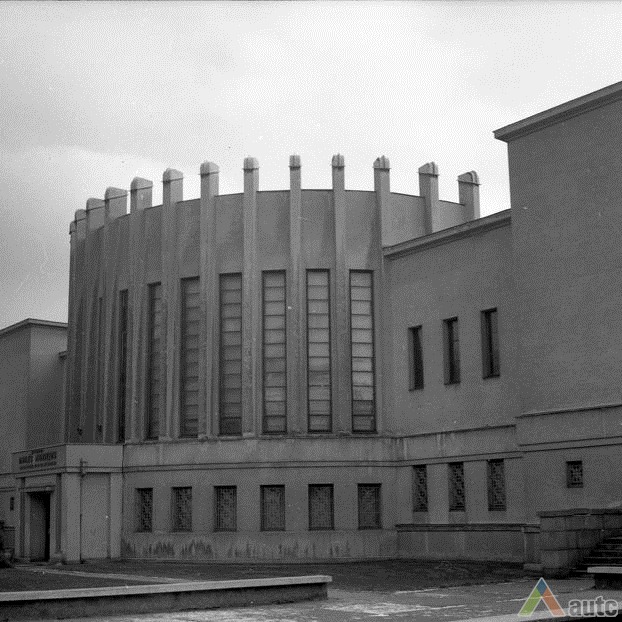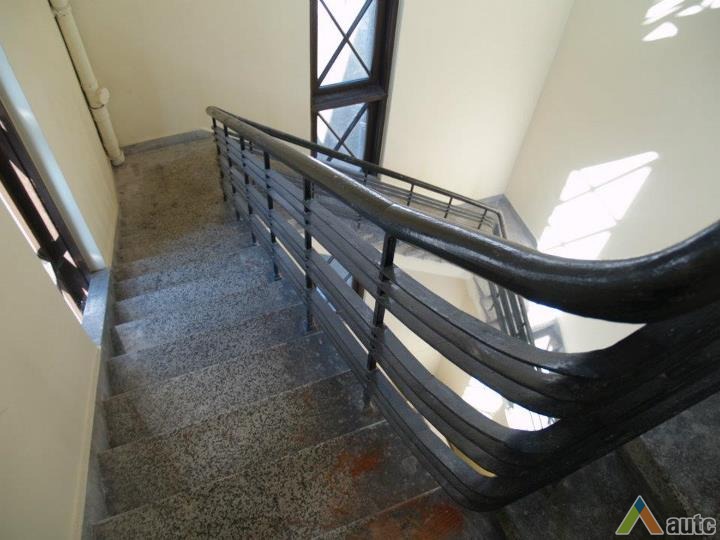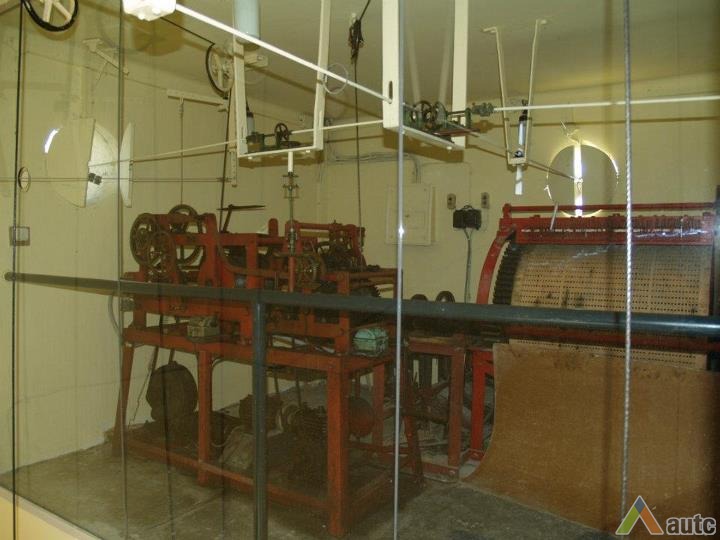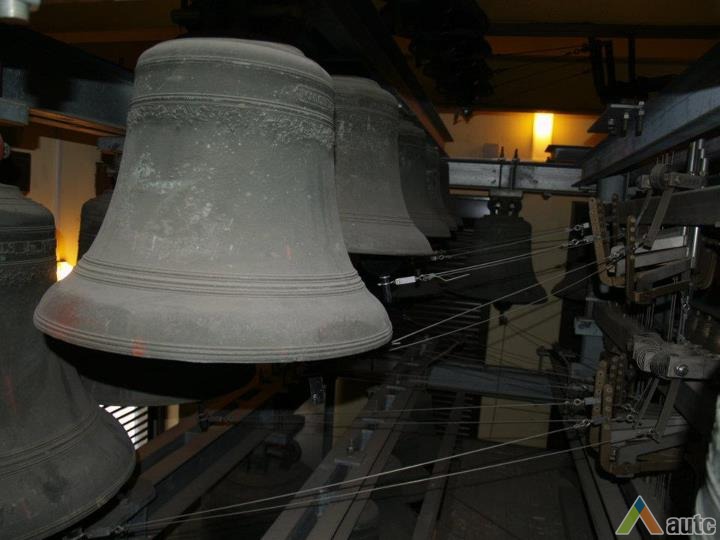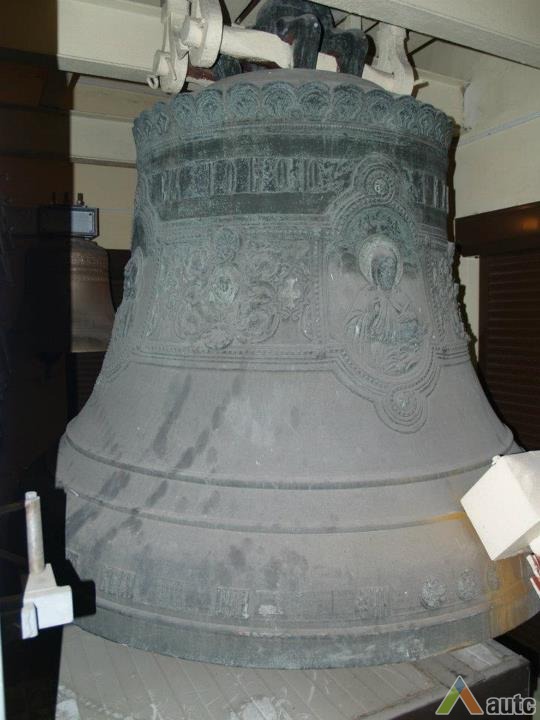The construction of Vytautas the Great War Museum was one of the most important architectural events of interwar Lithuania, which took almost the entire period of independence to complete. The development of the Unity Square, which would become the centrepiece of the city, began in 1921 following the establishment of a museum and the erection of the Crypt to those Perished for the Independence of Lithuania. Although the site was rather small, as one article of that time wrote in a patriotic spirit “no major public gathering, no ceremony, no ethnic festival and no celebration in general would go by without commemorating that dear site of the temporary capital”.
In 1923 it was decided that the site needs expanding. The city council ordered to draw up a draft for a museum (architect / engineer A. Jokimas) “which would be big enough to house a national museum, a city museum, an ecclesiastical museum and an art gallery for Čiurlionis’s works”. Despite that, the project failed to take form. However, with the approach of the 500th anniversary of the death of Vytautas Magnus, things took a new turn. The idea to “perpetuate the memory of Vytautas by building the largest museum in his name” was to become the pinnacle of the commemoration. The new “museum of museums” was to become home to all sorts of museums. In 1935, with the construction coming to the end, the main premises of the building were to be “divided amongst the war museum, Čiurlionis gallery, ethnography section and periodic exhibitions”.
The draft of the building was prepared by and the construction carried out under the supervision of a team of famous architects of that time: Vladimiras Dubeneckis, Karolis Reisonas, and Kazimieras Kriščiukaitis. The selection of the project required two tenders (1929 and 1930) and the construction lasted until the end of 1936. The construction of the House of Nation’s Culture, which then had huge symbolic significance, received wide press coverage and was funded by generous donations from both locals and Lithuanians abroad.
Vaidas Petrulis
